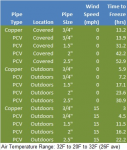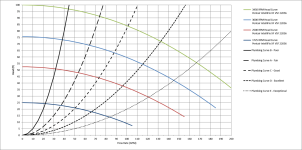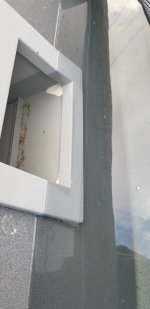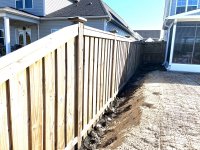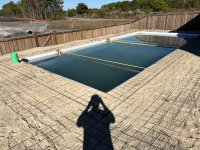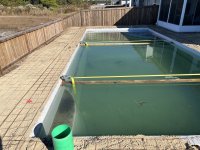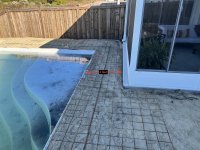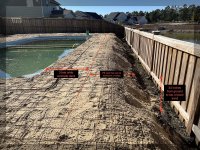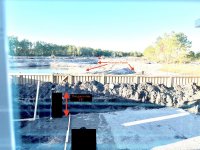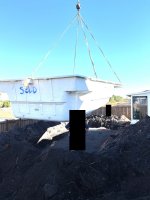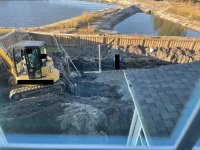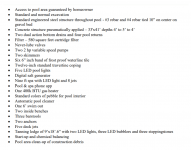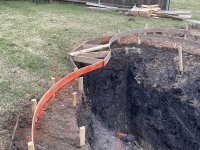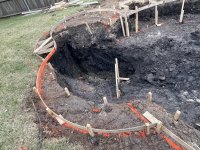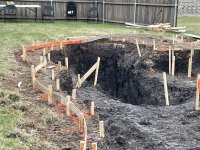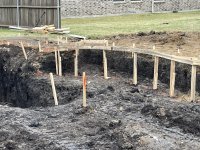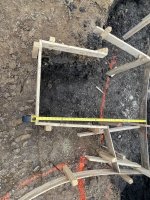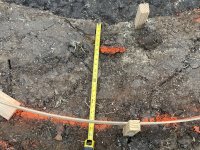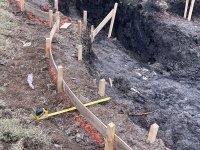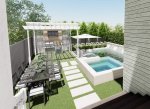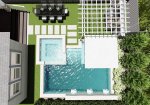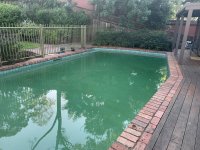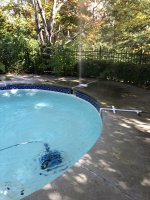-
Locked
How do I use Chlorine in my Spa or Hot Tub?
- By Nitro
- Spas and Hot Tubs
- 7 Replies
If you have a question about any information within this Sticky, please start a new thread for yourself where you will receive very quick responses to your specific questions. Thank you!
Introduction
There are two main things to consider when maintaining your hot tub water, Water Balance and Sanitation. There are a few different methods to sanitize your hot tub, Bromine and Chlorine being the most popular. However, I will only cover Chlorine, because that's what I know the best, thanks to Richard (Chem Geek). It is based on his famous Dichlor/Bleach method. If you're interested in Bromine, here https://www.troublefreepool.com/threads/how-do-i-use-bromine-in-my-spa-or-pool.84/ is an excellent writeup. However, Water Balance is related to all sanitation methods, so this could be helpful to anyone.
I will assume you have a fresh fill of water in your tub. If you don't and you're having problems, or it's close to the time to refill, you're better off just refilling your tub and starting over. Hot tub water should be changed every 3-5 months depending on usage. However, if your tub has serious problems, or you bought a used tub etc., you may want to decontaminate your tub using a product like Ahh-some.
In order to really maintain your water properly you need to test it. Test strips are ok for getting rough estimates, but IMO will make it more difficult to maintain your tub. It would be difficult for me to keep my tub as well tuned as it is by just using test strips. For a novice, I can see it being really difficult, especially if you have Well Water. Do yourself a favor and get a Drop Test kit such as the Taylor K-2006 or the TF-100.
One more note. Before I got my hot tub, I knew nothing about water chemistry. After I started studying hot tub water chemistry, I realized there was a lot more to keeping a hot tub water safe than I anticipated. However, after learning it, I realized it doesn't have to be difficult or time consuming. This may get a little technical, but once you learn it, you'll have no trouble keeping your water balanced and sanitized.
Water Balance
Water can be either Acidic, Balanced or Alkaline. If your water is not balanced, it could cause all kinds of problems. If it's too Acidic it could cause corrosion. If it's too Alkaline it could cause scaling. Both of which will reduce the effectiveness of your sanitizer. If your water is not balanced then your water is not safe for you, or your tub. So it's really critical to get this correct.
There are four main parameters to keeping your water balanced. Water Temperature, Calcium Hardness (CH), Total Alkalinity (TA) and Potens Hydrogen (pH). Assuming your water temp is around 100 degrees, we'll just focus on CH, TA and pH. The best way to test these is with a Drop Test kit, like the ones mentioned above. IMO Test Strips are just not accurate enough to test these, especially for a beginner.
Calcium Hardness: CH is basically the amount of Calcium in your water. The lower your CH, the higher your TA and pH need to be to have balanced water. The higher your CH, the lower your TA and pH need to be. The first thing you should do is test your CH in your tub. If you haven't filled your tub yet, test your tap water for CH using a drop test kit. If you have a water softener in your house, it will remove most of the Calcium from your water. That means you may get a different reading from your indoor sink then from the outdoor hose. Check both to make sure. If you have really bad well water i.e. lots of metals etc., you may want to fill your tub using the water softener water, then just add Calcium afterward. If your water is city treated water, you may be ok straight from the hose. Also, consider getting a pre-filter that attaches to your hose, and filters out some of the metals.
Here's my recommendation. If your CH is much below 100 ppm, you should add calcium to bring it up to 130-150 range. If your CH is over 100, you can leave it alone and just make a note of what it is. The CH level will be used to determine your TA/pH levels. To raise Calcium you add Calcium Chloride, aka Calcium Increaser. You can find it at most Pool/Spa supply stores. The good news is you only need to add Calcium once per water change, because it will stay relatively the same until your next water change.
Potens Hydrogen: pH is the measure of acidity in your water. It's on a scale of 0 to 14, 7 being neutral. The human eye has a pH of 7.5, so the ideal range in Pools/Spas is 7.4-7.6 with a min of 7.2 and max of 7.8. However, and this is important, just because you have a pH of 7.5, doesn't mean your water is balanced. If your TA and/or Ch is too high, you could be forming scale in your tub. So it is very important to have balanced water along with an ideal pH.
Total Alkalinity: Alkalinity is a pH Buffer. High levels of TA will not allow pH to change from additions of acid or base. However, a high TA requires a low pH to have balanced water. On the other hand, very low levels of TA will allow the pH to change with very little acid. A very low TA level could cause your pH to drop to low levels, very fast with little acid. Also, the lower your TA, the higher your pH needs to be to have balanced water. So, as you can see, a very low TA can become very unstable.
However, pH will have a tendency to rise with aeration (i.e. use of jets and air), more so if your TA is high. Although, as long as you're not adding Acid (or anything with a lower pH) to your tub, the pH will not usually drop. Therefore, in hot tubs the problem is normally pH rise (or Drift), because of all the aeration. So, the trick is to get the TA high enough to not create an unstable situation, and low enough to not allow pH to rise too much.
Let me repeat the last sentence, because it's the single most important thing to keeping your water balanced. The key to having balanced water, without pH drift, is having the correct TA level. If you find your pH rises too high (>8.0) after using your tub, your TA is too high, and needs to be lowered. If you find your pH is too low and/or your water is continually acidic, your TA is too low and needs to be raised. By fine tuning your TA, you can get your pH perfectly balanced, that rarely needs adjustment.
SO, what's a good TA then? Because spas tend to have a lot of aeration from jets and because the water is hot, it is best to keep the TA low at around 50 ppm.
OK, how do we adjust TA then? If TA is too low, you just add Baking Soda to raise it. However, if TA is high, it's little more involved. You'll need Acid (Dry or Muriatic). Depending on how high your TA is will depend on how long it will take you. Plan on it taking around an hour to decrease TA by 100 ppm. So if your TA is 300 ppm, plan it taking around 2-3 hours. First, uncover your tub and turn on all your jets, air, blowers, waterfalls etc. Test your pH. When it's greater than 7.8, add enough acid to bring it down to 7.0. Keep aerating until your pH is 7.8 again (about 30 min), then add more acid and repeat. Every time you add acid you're lowering your pH and TA. When you get your TA tuned perfectly, your pH will rise to a level (i.e. ~7.6) and stop, then you know you're at your ideal TA level. If your pH is rising too high (>8.0), bring your TA down a little more. If your pH doesn't rise enough from aeration (after an hour or more), you over shot it and need to add a little Baking Soda to raise your TA. After a few days/weeks of monitoring it, you'll get your TA tuned perfectly. You may need to add a little Dry Acid once a week or two, but your water should be well balanced at that point.
I wouldn't go much below 50 ppm TA, because that could become unstable if you add any kind of acid. Also, if you have a high TA, above 100, you may need to add more acid in the beginning to get your pH down. Remember, TA is a pH buffer, so the higher the TA, the more acid you need to bring the pH down. It takes approximately 8 oz total of Dry Acid to bring TA down 100 ppm in a 350 Gal tub. However, the key is not to add too much acid all at once to bring your pH down under 7.0. That's why you should aerate in between adding acid.
Lastly, there is one more thing I haven't mentioned that you can add to your tub that will help buffer your pH, Borates. The easiest way to add Borates to your tub is to get a product called Gentle Spa. It is pH balanced, so there is no need to add acid to counter balance it. The ideal amount is ~50 ppm, and only needs to be added once per water change. That will help keep your pH from drifting from aeration. Not to mention, actually make your water feel silkier. I highly recommend it.
BTW, I'm purposely not giving the exact amounts of Calcium, Baking Soda or Acid to use, because PoolMath will calculate that all for you. Just enter your tub size at the top, enter the current level in the left column, then enter your goal amount in the right. It will tell you the amount and what you need to add. For instance, if you enter tub size of 320 gal, a pH of 7.8 in the left column and 7.0 in the right, it calculates .4 oz or 2 tbs of Dry Acid. All you need to balance your water perfectly is Calcium Chloride, Baking Soda, Dry Acid and The Pool Calculator.
Sanitation
I'm only going to discuss Chlorine here, because I don't know enough about Bromine to comment on it. This is based on Chem Geek's Dichlor/Bleach method. I have found this method to be very easy and safe to use. I have yet to have a problem. I don't want to get into pros and cons, because that's better suited for it's own thread. If you don't know his method, this should explain it to you. If you do know it, maybe this will help you execute it better. I'm not going to get too technical. I'm just going to discuss everything that's important to keep your tub sanitized easily. If you want more details, search through Chem Geek's posts. You'll have plenty to read. Disclaimer: I'm not trying to convince you to use this method. I'm just explaining it. Please weigh all options before making a decision.
There are really two main things happening when your pool/tub is being sanitized. Organic waste is being oxidized, and bacteria/viruses are being killed. Chlorine does both, very well. That's why it's the most popular sanitizer in pools and spas. However, in order for chlorine to be effective there needs to be a Free Chlorine (FC) level in your tub at all times. If it drops to zero, bacteria will multiply within hours. So the number one rule with using chlorine as a sanitizer is, never let it drop to Zero for any length of time. Now lets get started on the procedure.
The first thing we are going to use to sanitize our tub is Dichlor. Dichlor is actually two things, Chlorine and Cyanuric Acid (CYA). CYA is a chlorine stabilizer, which slows down dissipation from UV rays (sunlight). It also acts as a buffer to hold chlorine in reserve. Having CYA in your tub will stop the chlorine from dissipating as fast while waiting for something to do and buffers the harshness associated with chlorine. However, CYA also cuts down on the ability for the chlorine to sanitize. So in other words, the higher the CYA level, the longer the FC will wait in the tub, but the less effective the FC is. With no CYA in the tub, using bleach would be too strong and not practical to use. So, there needs to be a happy medium. Luckily, Chem Geek has come up with one for us. He suggests a CYA of ~20 ppm. Personally I use a CYA of 30 ppm for reasons I won't get into here. But I think Chem Geek would agree anywhere between 20-50 is fine. Where the problem comes in is when CYA gets too high (above 100) after weeks of using Dichlor. Then your FC needs to be really high to get the same sanitation effectiveness. That's why we switch to bleach after we get our CYA to 20-30. Bleach doesn't add anymore CYA.
So, I'm going to assume our target CYA is 30, but feel free to use 20 and adjust as necessary. I find that it's easier to keep track of how much Dichlor you're adding to the tub and calculate the CYA, rather than testing CYA with the drop test kit until you get a 30 ppm reading. For every 10 ppm of Dichlor you add to your tub, you add 9 ppm CYA. So roughly 34 ppm Dichlor will give you 30 CYA. On a fresh fill, and after your water is balanced by the above method, shock your tub with Dichlor to 10 ppm FC. Then over the course of the next several days, depending on bather load, add 24 ppm more FC using Dichlor. You want to keep your FC normally between 3-6 ppm every day. This means you will be testing your FC EVERY DAY.
For example: On one day you test your FC and it's 1 ppm. You'll then add 5 ppm FC to bring it to 6. The next day you test FC and it's 3. You then add 3 ppm FC. You will do this until you add a total of 34 ppm FC to your tub using Dichlor. After that, you then switch to using bleach (plain, no scent, not splashless, no Cloromax). Important: if you're not willing to test your tub everyday, at least for the first month or two, this method is not for you. I'd recommend another sanitation method
When you use your tub (this applies to when you are still using Dichlor or after you switch to bleach), the rule of thumb is, you'll use approximately 7 ppm FC per person per hour in a 350 gal tub. Now this will depend on a lot of things, water temp, cleanliness of the users etc. If it's just two people, after taking showers, using no swimsuits, with the temp at 98 you may only need 2 ppm FC/person/hour. However, if you have 6 people in their clothes, drinking (spilling) beer, with a temp at 102 causing everyone to sweat, you may need 20 ppm FC/person/hour. So this is where you may need to make a judgment call and/or experiment. Remember, the Chlorine has to do two things, Oxidize Waste, and Kill Bacteria. If your tub is being subjected to a lot of waste (sweat, beer etc), your FC will be used up and not be able to kill bacteria. Not good! So I'll give you two scenarios and how you might go about running an experiment. Remember, all this up front work is only necessary in the beginning, until you learn how much FC is being used in your tub. Once you know, it becomes easy to maintain. The rule of thumb is, assuming CYA is 20-30 ppm, FC should normally be between 3-6, with a min of 1 and shock to 12 once a week.
We'll go with the easy one first, two people, showered, no suits etc. (Note: Some people prefer to use the tub with very little FC. That's your choice. I'm just telling you how to determine how much FC you're using in a safe manner). Test your FC and add Chlorine to get to 5 ppm FC. After one hour of soaking test FC again. If you find you have no FC after an hour, next time start with 6 or 7. If you find you still have 3 ppm FC, next time it's safe to start with 3-4 ppm FC. Get it? The trick is to have the lowest amount of FC without ever dropping to zero. If you plan on staying in the tub longer than an hour, either start out with more FC, or add some during the soak. However, you don't want to get into the tub with the FC much above 8, unless of course you like a strong smell of chlorine. I got in once with FC at 10, and it was a little too much for me, and I like the smell of Chlorine.
On the other extreme. Full tub of people drinking, sweating etc. Do the same as above, but start out with more FC, maybe 6-8 ppm. Check the FC in an hour (or even a half hour). If you have no FC, you need to add some and check more often. If you still have FC, add some, and check again in the same time frame. It's the same as above, but you're just using more FC, more often. However, having the FC drop to zero for a short time with your lover, is not the same as with 4-5 other people, if you get my drift. So it's much more important to keep FC above zero at ALL times during a Hot Tub Party.
If you find you're having trouble keeping FC in your tub during parties, and/or you smell a foul odor during your soaks, you can add Potassium Monopersulfate (MPS or Non-Chlorine Shock) before (and/or during) your soak to help the Chlorine Oxidize waste. The only thing I would say is, go easy with MPS. Use only the amount needed and not much more. It is acidic and will lower your TA/pH if you use a lot. Start out with 1-2 tbs in addition to your normal FC, and see if that cuts down on the FC usage. Up it to 3-4 tbs, or add another 1-2 tbs during the soak if needed. MPS will help oxidize waste. However, it will not kill bacteria, so you still need FC. Also, you can use MPS as a shock once a week to help oxidize leftover waste, and reduce Combined Chlorine (spent FC).
Wow if you made it this far, you did pretty well. It seems like a lot to learn, but it's really not. I'll summarize it here.
Summary
Water Balance
If your CH is much below 100 ppm, raise it to ~150 ppm. Otherwise, make a note of it.
Adjust your TA to ~50 ppm. Use Baking Soda to raise it (unlikely to be needed), or Acid/Aeration method to lower it. It takes ~8 oz Dry Acid to lower TA by 100 ppm in a 350 Gal Tub. Don't add it all at once!
pH should be between 7.2-7.8. Aerate to Raise pH. Acid to lower it.
If pH creeps up too much (>8.0), lower TA. If pH is too low, and doesn't raise enough by aeration, raise TA.
Add ~50 ppm Borate. (Borox/Acid or Gentle Spa)
Calcium, Baking Soda, Dry Acid and Borates is all you need to balance your water.
Use PoolMath to calculate exact amounts to add.
Sanitation
On a fresh fill use Dichlor until you get to 20-30 ppm CYA. (10 ppm FC = 9 ppm CYA)
Then switch to plain bleach or liquid chlorine.
Never let FC drop to Zero for any length of time. Keep it between 3-6 ppm normally, min of 1 ppm, and shock to 12 ppm once a week.
Use MPS if needed before hot tub party's and/or once a week to help oxidation. Don't use more than needed, because it's acidic and may lower your TA/pH.
Dichlor, Bleach and MPS is all you need to keep your tub sanitized.
Use PoolMath to calculate exact amounts to add.
Lastly, get a drop test kit such as the Taylor K-2006 or a TF-100. Also get FC test strips. They come in handy for a quick FC estimate, during party's etc. The only two things you need to check regularly are FC and pH. Check them every day and after soaks. Adjust TA as needed. If you have your water well balanced, you'll rarely need to adjust your TA. You'll just be adding chlorine every day, and after soaks. Shock once a week, and/or after high bather loads. Use MPS if you have party's, and/or don't want to use as much chlorine. Easy as can be, and your tub is always ready.
I hope that helps you to understand Water Maintenance a little better. It helped me just to write. If I missed anything important please let me know, I'll be happy to add it.
Happy tubbing!
Introduction
There are two main things to consider when maintaining your hot tub water, Water Balance and Sanitation. There are a few different methods to sanitize your hot tub, Bromine and Chlorine being the most popular. However, I will only cover Chlorine, because that's what I know the best, thanks to Richard (Chem Geek). It is based on his famous Dichlor/Bleach method. If you're interested in Bromine, here https://www.troublefreepool.com/threads/how-do-i-use-bromine-in-my-spa-or-pool.84/ is an excellent writeup. However, Water Balance is related to all sanitation methods, so this could be helpful to anyone.
I will assume you have a fresh fill of water in your tub. If you don't and you're having problems, or it's close to the time to refill, you're better off just refilling your tub and starting over. Hot tub water should be changed every 3-5 months depending on usage. However, if your tub has serious problems, or you bought a used tub etc., you may want to decontaminate your tub using a product like Ahh-some.
In order to really maintain your water properly you need to test it. Test strips are ok for getting rough estimates, but IMO will make it more difficult to maintain your tub. It would be difficult for me to keep my tub as well tuned as it is by just using test strips. For a novice, I can see it being really difficult, especially if you have Well Water. Do yourself a favor and get a Drop Test kit such as the Taylor K-2006 or the TF-100.
One more note. Before I got my hot tub, I knew nothing about water chemistry. After I started studying hot tub water chemistry, I realized there was a lot more to keeping a hot tub water safe than I anticipated. However, after learning it, I realized it doesn't have to be difficult or time consuming. This may get a little technical, but once you learn it, you'll have no trouble keeping your water balanced and sanitized.
Water Balance
Water can be either Acidic, Balanced or Alkaline. If your water is not balanced, it could cause all kinds of problems. If it's too Acidic it could cause corrosion. If it's too Alkaline it could cause scaling. Both of which will reduce the effectiveness of your sanitizer. If your water is not balanced then your water is not safe for you, or your tub. So it's really critical to get this correct.
There are four main parameters to keeping your water balanced. Water Temperature, Calcium Hardness (CH), Total Alkalinity (TA) and Potens Hydrogen (pH). Assuming your water temp is around 100 degrees, we'll just focus on CH, TA and pH. The best way to test these is with a Drop Test kit, like the ones mentioned above. IMO Test Strips are just not accurate enough to test these, especially for a beginner.
Calcium Hardness: CH is basically the amount of Calcium in your water. The lower your CH, the higher your TA and pH need to be to have balanced water. The higher your CH, the lower your TA and pH need to be. The first thing you should do is test your CH in your tub. If you haven't filled your tub yet, test your tap water for CH using a drop test kit. If you have a water softener in your house, it will remove most of the Calcium from your water. That means you may get a different reading from your indoor sink then from the outdoor hose. Check both to make sure. If you have really bad well water i.e. lots of metals etc., you may want to fill your tub using the water softener water, then just add Calcium afterward. If your water is city treated water, you may be ok straight from the hose. Also, consider getting a pre-filter that attaches to your hose, and filters out some of the metals.
Here's my recommendation. If your CH is much below 100 ppm, you should add calcium to bring it up to 130-150 range. If your CH is over 100, you can leave it alone and just make a note of what it is. The CH level will be used to determine your TA/pH levels. To raise Calcium you add Calcium Chloride, aka Calcium Increaser. You can find it at most Pool/Spa supply stores. The good news is you only need to add Calcium once per water change, because it will stay relatively the same until your next water change.
Potens Hydrogen: pH is the measure of acidity in your water. It's on a scale of 0 to 14, 7 being neutral. The human eye has a pH of 7.5, so the ideal range in Pools/Spas is 7.4-7.6 with a min of 7.2 and max of 7.8. However, and this is important, just because you have a pH of 7.5, doesn't mean your water is balanced. If your TA and/or Ch is too high, you could be forming scale in your tub. So it is very important to have balanced water along with an ideal pH.
Total Alkalinity: Alkalinity is a pH Buffer. High levels of TA will not allow pH to change from additions of acid or base. However, a high TA requires a low pH to have balanced water. On the other hand, very low levels of TA will allow the pH to change with very little acid. A very low TA level could cause your pH to drop to low levels, very fast with little acid. Also, the lower your TA, the higher your pH needs to be to have balanced water. So, as you can see, a very low TA can become very unstable.
However, pH will have a tendency to rise with aeration (i.e. use of jets and air), more so if your TA is high. Although, as long as you're not adding Acid (or anything with a lower pH) to your tub, the pH will not usually drop. Therefore, in hot tubs the problem is normally pH rise (or Drift), because of all the aeration. So, the trick is to get the TA high enough to not create an unstable situation, and low enough to not allow pH to rise too much.
Let me repeat the last sentence, because it's the single most important thing to keeping your water balanced. The key to having balanced water, without pH drift, is having the correct TA level. If you find your pH rises too high (>8.0) after using your tub, your TA is too high, and needs to be lowered. If you find your pH is too low and/or your water is continually acidic, your TA is too low and needs to be raised. By fine tuning your TA, you can get your pH perfectly balanced, that rarely needs adjustment.
SO, what's a good TA then? Because spas tend to have a lot of aeration from jets and because the water is hot, it is best to keep the TA low at around 50 ppm.
OK, how do we adjust TA then? If TA is too low, you just add Baking Soda to raise it. However, if TA is high, it's little more involved. You'll need Acid (Dry or Muriatic). Depending on how high your TA is will depend on how long it will take you. Plan on it taking around an hour to decrease TA by 100 ppm. So if your TA is 300 ppm, plan it taking around 2-3 hours. First, uncover your tub and turn on all your jets, air, blowers, waterfalls etc. Test your pH. When it's greater than 7.8, add enough acid to bring it down to 7.0. Keep aerating until your pH is 7.8 again (about 30 min), then add more acid and repeat. Every time you add acid you're lowering your pH and TA. When you get your TA tuned perfectly, your pH will rise to a level (i.e. ~7.6) and stop, then you know you're at your ideal TA level. If your pH is rising too high (>8.0), bring your TA down a little more. If your pH doesn't rise enough from aeration (after an hour or more), you over shot it and need to add a little Baking Soda to raise your TA. After a few days/weeks of monitoring it, you'll get your TA tuned perfectly. You may need to add a little Dry Acid once a week or two, but your water should be well balanced at that point.
I wouldn't go much below 50 ppm TA, because that could become unstable if you add any kind of acid. Also, if you have a high TA, above 100, you may need to add more acid in the beginning to get your pH down. Remember, TA is a pH buffer, so the higher the TA, the more acid you need to bring the pH down. It takes approximately 8 oz total of Dry Acid to bring TA down 100 ppm in a 350 Gal tub. However, the key is not to add too much acid all at once to bring your pH down under 7.0. That's why you should aerate in between adding acid.
Lastly, there is one more thing I haven't mentioned that you can add to your tub that will help buffer your pH, Borates. The easiest way to add Borates to your tub is to get a product called Gentle Spa. It is pH balanced, so there is no need to add acid to counter balance it. The ideal amount is ~50 ppm, and only needs to be added once per water change. That will help keep your pH from drifting from aeration. Not to mention, actually make your water feel silkier. I highly recommend it.
BTW, I'm purposely not giving the exact amounts of Calcium, Baking Soda or Acid to use, because PoolMath will calculate that all for you. Just enter your tub size at the top, enter the current level in the left column, then enter your goal amount in the right. It will tell you the amount and what you need to add. For instance, if you enter tub size of 320 gal, a pH of 7.8 in the left column and 7.0 in the right, it calculates .4 oz or 2 tbs of Dry Acid. All you need to balance your water perfectly is Calcium Chloride, Baking Soda, Dry Acid and The Pool Calculator.
Sanitation
I'm only going to discuss Chlorine here, because I don't know enough about Bromine to comment on it. This is based on Chem Geek's Dichlor/Bleach method. I have found this method to be very easy and safe to use. I have yet to have a problem. I don't want to get into pros and cons, because that's better suited for it's own thread. If you don't know his method, this should explain it to you. If you do know it, maybe this will help you execute it better. I'm not going to get too technical. I'm just going to discuss everything that's important to keep your tub sanitized easily. If you want more details, search through Chem Geek's posts. You'll have plenty to read. Disclaimer: I'm not trying to convince you to use this method. I'm just explaining it. Please weigh all options before making a decision.
There are really two main things happening when your pool/tub is being sanitized. Organic waste is being oxidized, and bacteria/viruses are being killed. Chlorine does both, very well. That's why it's the most popular sanitizer in pools and spas. However, in order for chlorine to be effective there needs to be a Free Chlorine (FC) level in your tub at all times. If it drops to zero, bacteria will multiply within hours. So the number one rule with using chlorine as a sanitizer is, never let it drop to Zero for any length of time. Now lets get started on the procedure.
The first thing we are going to use to sanitize our tub is Dichlor. Dichlor is actually two things, Chlorine and Cyanuric Acid (CYA). CYA is a chlorine stabilizer, which slows down dissipation from UV rays (sunlight). It also acts as a buffer to hold chlorine in reserve. Having CYA in your tub will stop the chlorine from dissipating as fast while waiting for something to do and buffers the harshness associated with chlorine. However, CYA also cuts down on the ability for the chlorine to sanitize. So in other words, the higher the CYA level, the longer the FC will wait in the tub, but the less effective the FC is. With no CYA in the tub, using bleach would be too strong and not practical to use. So, there needs to be a happy medium. Luckily, Chem Geek has come up with one for us. He suggests a CYA of ~20 ppm. Personally I use a CYA of 30 ppm for reasons I won't get into here. But I think Chem Geek would agree anywhere between 20-50 is fine. Where the problem comes in is when CYA gets too high (above 100) after weeks of using Dichlor. Then your FC needs to be really high to get the same sanitation effectiveness. That's why we switch to bleach after we get our CYA to 20-30. Bleach doesn't add anymore CYA.
So, I'm going to assume our target CYA is 30, but feel free to use 20 and adjust as necessary. I find that it's easier to keep track of how much Dichlor you're adding to the tub and calculate the CYA, rather than testing CYA with the drop test kit until you get a 30 ppm reading. For every 10 ppm of Dichlor you add to your tub, you add 9 ppm CYA. So roughly 34 ppm Dichlor will give you 30 CYA. On a fresh fill, and after your water is balanced by the above method, shock your tub with Dichlor to 10 ppm FC. Then over the course of the next several days, depending on bather load, add 24 ppm more FC using Dichlor. You want to keep your FC normally between 3-6 ppm every day. This means you will be testing your FC EVERY DAY.
For example: On one day you test your FC and it's 1 ppm. You'll then add 5 ppm FC to bring it to 6. The next day you test FC and it's 3. You then add 3 ppm FC. You will do this until you add a total of 34 ppm FC to your tub using Dichlor. After that, you then switch to using bleach (plain, no scent, not splashless, no Cloromax). Important: if you're not willing to test your tub everyday, at least for the first month or two, this method is not for you. I'd recommend another sanitation method
When you use your tub (this applies to when you are still using Dichlor or after you switch to bleach), the rule of thumb is, you'll use approximately 7 ppm FC per person per hour in a 350 gal tub. Now this will depend on a lot of things, water temp, cleanliness of the users etc. If it's just two people, after taking showers, using no swimsuits, with the temp at 98 you may only need 2 ppm FC/person/hour. However, if you have 6 people in their clothes, drinking (spilling) beer, with a temp at 102 causing everyone to sweat, you may need 20 ppm FC/person/hour. So this is where you may need to make a judgment call and/or experiment. Remember, the Chlorine has to do two things, Oxidize Waste, and Kill Bacteria. If your tub is being subjected to a lot of waste (sweat, beer etc), your FC will be used up and not be able to kill bacteria. Not good! So I'll give you two scenarios and how you might go about running an experiment. Remember, all this up front work is only necessary in the beginning, until you learn how much FC is being used in your tub. Once you know, it becomes easy to maintain. The rule of thumb is, assuming CYA is 20-30 ppm, FC should normally be between 3-6, with a min of 1 and shock to 12 once a week.
We'll go with the easy one first, two people, showered, no suits etc. (Note: Some people prefer to use the tub with very little FC. That's your choice. I'm just telling you how to determine how much FC you're using in a safe manner). Test your FC and add Chlorine to get to 5 ppm FC. After one hour of soaking test FC again. If you find you have no FC after an hour, next time start with 6 or 7. If you find you still have 3 ppm FC, next time it's safe to start with 3-4 ppm FC. Get it? The trick is to have the lowest amount of FC without ever dropping to zero. If you plan on staying in the tub longer than an hour, either start out with more FC, or add some during the soak. However, you don't want to get into the tub with the FC much above 8, unless of course you like a strong smell of chlorine. I got in once with FC at 10, and it was a little too much for me, and I like the smell of Chlorine.
On the other extreme. Full tub of people drinking, sweating etc. Do the same as above, but start out with more FC, maybe 6-8 ppm. Check the FC in an hour (or even a half hour). If you have no FC, you need to add some and check more often. If you still have FC, add some, and check again in the same time frame. It's the same as above, but you're just using more FC, more often. However, having the FC drop to zero for a short time with your lover, is not the same as with 4-5 other people, if you get my drift. So it's much more important to keep FC above zero at ALL times during a Hot Tub Party.
If you find you're having trouble keeping FC in your tub during parties, and/or you smell a foul odor during your soaks, you can add Potassium Monopersulfate (MPS or Non-Chlorine Shock) before (and/or during) your soak to help the Chlorine Oxidize waste. The only thing I would say is, go easy with MPS. Use only the amount needed and not much more. It is acidic and will lower your TA/pH if you use a lot. Start out with 1-2 tbs in addition to your normal FC, and see if that cuts down on the FC usage. Up it to 3-4 tbs, or add another 1-2 tbs during the soak if needed. MPS will help oxidize waste. However, it will not kill bacteria, so you still need FC. Also, you can use MPS as a shock once a week to help oxidize leftover waste, and reduce Combined Chlorine (spent FC).
Wow if you made it this far, you did pretty well. It seems like a lot to learn, but it's really not. I'll summarize it here.
Summary
Water Balance
If your CH is much below 100 ppm, raise it to ~150 ppm. Otherwise, make a note of it.
Adjust your TA to ~50 ppm. Use Baking Soda to raise it (unlikely to be needed), or Acid/Aeration method to lower it. It takes ~8 oz Dry Acid to lower TA by 100 ppm in a 350 Gal Tub. Don't add it all at once!
pH should be between 7.2-7.8. Aerate to Raise pH. Acid to lower it.
If pH creeps up too much (>8.0), lower TA. If pH is too low, and doesn't raise enough by aeration, raise TA.
Add ~50 ppm Borate. (Borox/Acid or Gentle Spa)
Calcium, Baking Soda, Dry Acid and Borates is all you need to balance your water.
Use PoolMath to calculate exact amounts to add.
Sanitation
On a fresh fill use Dichlor until you get to 20-30 ppm CYA. (10 ppm FC = 9 ppm CYA)
Then switch to plain bleach or liquid chlorine.
Never let FC drop to Zero for any length of time. Keep it between 3-6 ppm normally, min of 1 ppm, and shock to 12 ppm once a week.
Use MPS if needed before hot tub party's and/or once a week to help oxidation. Don't use more than needed, because it's acidic and may lower your TA/pH.
Dichlor, Bleach and MPS is all you need to keep your tub sanitized.
Use PoolMath to calculate exact amounts to add.
Lastly, get a drop test kit such as the Taylor K-2006 or a TF-100. Also get FC test strips. They come in handy for a quick FC estimate, during party's etc. The only two things you need to check regularly are FC and pH. Check them every day and after soaks. Adjust TA as needed. If you have your water well balanced, you'll rarely need to adjust your TA. You'll just be adding chlorine every day, and after soaks. Shock once a week, and/or after high bather loads. Use MPS if you have party's, and/or don't want to use as much chlorine. Easy as can be, and your tub is always ready.
I hope that helps you to understand Water Maintenance a little better. It helped me just to write. If I missed anything important please let me know, I'll be happy to add it.
Happy tubbing!





